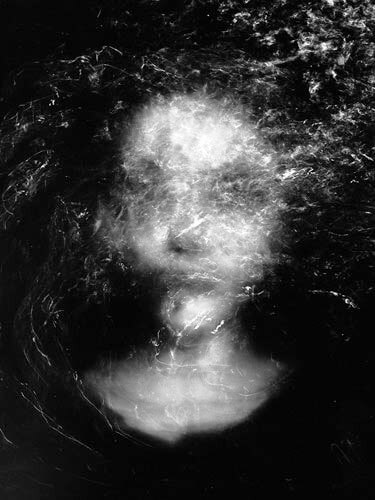Having practiced various means of artistic expression (painting, drawing, sculpture) since childhood, and completing formal training in architecture in 1988, Laurence began her self-taught journey into photography in 1990. Particularly interested in the female portrait and nude, and finding it difficult to adequately convey her mental images into words and direction, she gave up on the use of models and began to use herself exclusively as the subject of her photographs. Freed from the burden of words and the presence of others, she embraced the solitude, silence and freedom, while struggling to confront the image of her own body. Rather than portraying her body as it was, she sought to conceal, modify, even destroy it and reconstruct it in a form more acceptable to her. The result is a series of self-portraits which expertly use the reflective and distortive qualities of her materials along with the shadowy effects of light and negative images to create "paper phantoms", ghosts of herself that are there, yet disappear in an instant.
Laurence creates all of her images in camera and executes the silver gelatin prints in her own darkroom, with no alteration of the image after shooting. She has been the recipient of numerous awards and honors from European photographic organizations and her work has been exhibited extensively in Paris and elsewhere in France, Germany, Spain, Switzerland, Luxembourg and Belgium. This is the first gallery exhibition of her work in the United States.
Source: Galerie BMG
